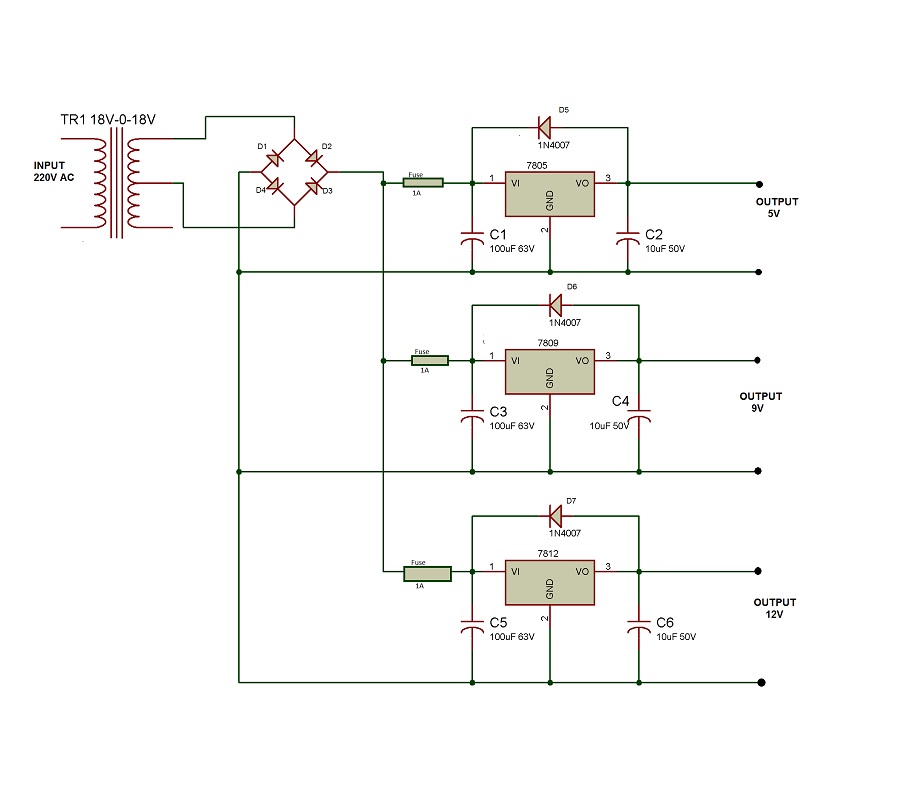Well it just seems like you’ll be putting a lot of work in for building a specific set of supplies for a specific set of gear.
If your gear changes down the road then you may have to change your power supply distribution box as well. Not enough current output, different voltages like 9V A/C (odd one but it’s out there). Some gear has center negative, some has center positive etc…
If your purpose is to reduce the amount of cables you could build a distribution box that simply holds your power supply boxes that came with your gear.
Inside you have female DC ports to plug those original boxes into.
From there you route female DC jacks to female DC jacks up on your desk where your gear is. Space them out around the desk. Then you plug on whatever original power supplies you need and hide the power bricks in your “distribution box”.
The use DC barrel to DC barrel connectors to plug-in you equipment from the corresponding DC jacks on your desk.
I mulled this for a long time and considered a main power supply box and instead went for the modular power brick distribution idea when I built my desks.
I did power, audio, usb, and MIDI but you could just do power.
The only catch is having both 2.1mm and 2.5mm barrel jacks. I use 2.5mm for the female barrel connectors and then use either 2.1mm or 2.5mm from the jack to the device as needed. All of my gear works this way so far with no problems.
It’s easy to fish out the power supplies when needed.
There’s nothing wrong with your solution but it might be extra work and more money down the road.
I also know this is very different from the road you’ve already started down. It’s more food for thought on the whole concept really. A different way of approaching a similar outcome.








